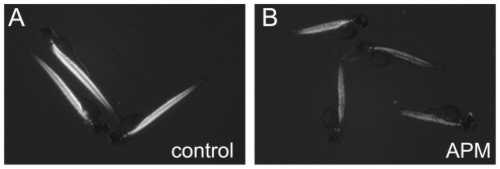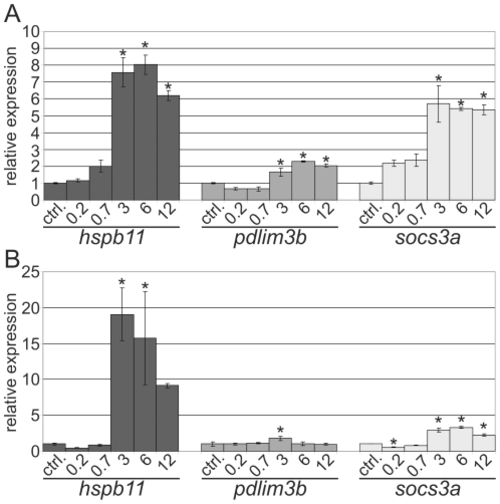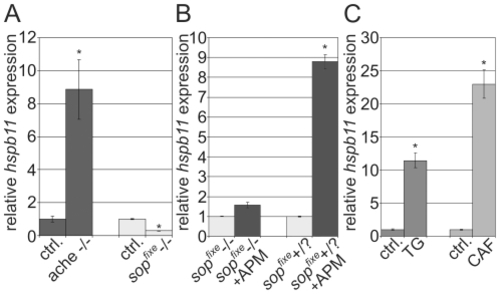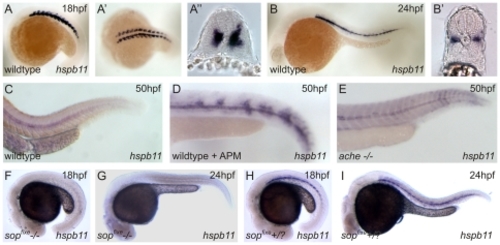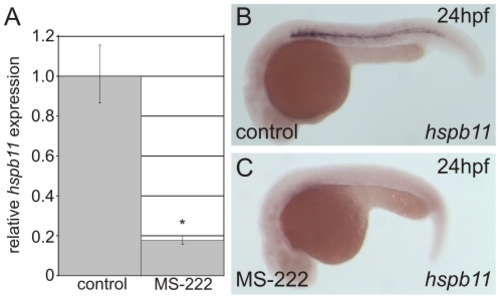- Title
-
Transcriptional Response of Zebrafish Embryos Exposed to Neurotoxic Compounds Reveals a Muscle Activity Dependent hspb11 Expression
- Authors
- Klüver, N., Yang, L., Busch, W., Scheffler, K., Renner, P., Strähle, U., and Scholz, S.
- Source
- Full text @ PLoS One

ZFIN is incorporating published figure images and captions as part of an ongoing project. Figures from some publications have not yet been curated, or are not available for display because of copyright restrictions. |
|
(A) Wild-type zebrafish embryo axial musculature is highly birefringent at 72 hpf. (B) APM [6 µM] exposure from 12–72 hpf resulted in defects in the axial musculature, which are shown by a reduced birefringence at 72 hpf. PHENOTYPE:
|
|
APM exposures for (A) 24 h (26–50 hpf) and (B) 2 h (48–50 hpf). Concentrations are given in µM. Bars represent the relative gene expression as fold change of the respective untreated control as mean ± standard deviation of three independent replicate exposures. Control = ctrl. * P<0.05. |
|
(A) |
|
Expression pattern of EXPRESSION / LABELING:
PHENOTYPE:
|
|
(A) qPCR |
|
(A, D and G) mmMO- PHENOTYPE:
|

